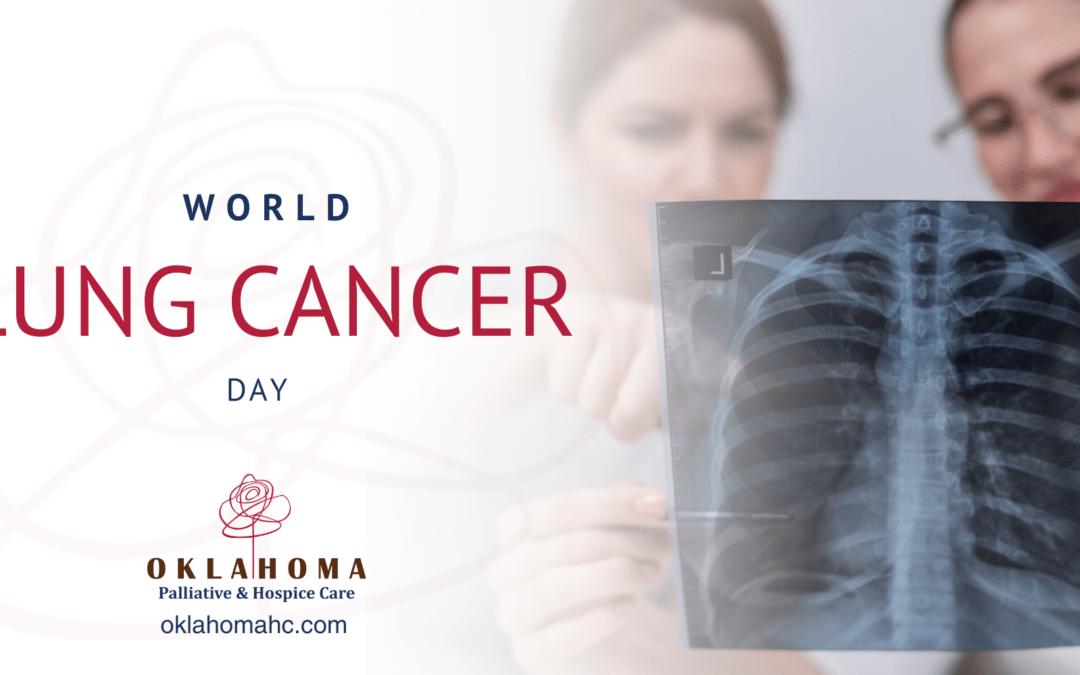Lung cancer is a major global health concern, affecting millions of people and their families each year. On World Lung Cancer Day 2023 we are raising awareness about this devastating disease and emphasizing the importance of prevention, early detection, and compassionate care.
We will delve into the history of World Lung Cancer Day, explore the causes and symptoms of lung cancer, offer preventative tips, and discuss how hospice care can provide support.
History of World Lung Cancer Day
World Lung Cancer Day was established in 2012 to raise awareness about lung cancer and its impact on individuals and society. Celebrated annually on August 1st, this day is an opportunity to acknowledge the importance of prevention, early detection, and improved treatment options.
The day aims to educate the public about the risk factors associated with lung cancer, encourage individuals to seek regular screenings, and promote ongoing research and support for patients and their families.
Causes of Lung Cancer
Being aware of the risk factors can help individuals understand their potential risk of developing lung cancer and take preventative measures. For those with a higher risk, early detection can lead to successful treatment and improved outcomes. Ultimately, knowing the causes of lung cancer is crucial in creating a culture of awareness and ensuring that individuals can take proactive steps to maintain healthy lung function.
- Smoking: Smoking is the leading cause of lung cancer, responsible for about 90% of lung cancer cases. Tobacco smoke contains numerous chemicals known to cause cancer, and quitting smoking is essential for lung health.
- Exposure to secondhand smoke: Secondhand smoke also increases the risk of developing lung cancer. Non-smokers regularly exposed to cigarette smoke are affected by the chemicals in the smoke.
- Exposure to occupational hazards: Certain occupations, such as mining and asbestos-related industries, pose a higher risk of lung cancer due to exposure to harmful substances like asbestos, radon, arsenic, and diesel exhaust.
- Radon gas exposure: Radon is a natural gas that can seep into homes, especially in areas with high levels in the soil. Prolonged exposure to high levels of radon gas can increase the risk of lung cancer.
- Genetic factors: In some cases, genetic factors may play a role in the development of lung cancer. Certain gene variations can make individuals more susceptible to the harmful effects of tobacco smoke or other environmental factors.
- Air pollution: Long-term exposure to high levels of air pollution, including pollutants such as delicate particulate matter (PM2.5), can contribute to the development of lung cancer.
- Previous radiation therapy: Individuals who have received radiation therapy to the chest area in the past, such as for other cancers like breast cancer or lymphoma, have an increased risk of developing lung cancer later in life.
Symptoms of Lung Cancer
Recognizing the early signs of lung cancer can significantly improve the chances of successful treatment. While symptoms may vary from person to person, here are some common indicators to watch out for:
- Persistent coughing that worsens over time
- Chest pain or discomfort
- Shortness of breath or wheezing
- Unexplained weight loss
- Fatigue and loss of appetite
- Coughing up blood or bloody phlegm
- Hoarse voice
It is important to consult a healthcare professional if you experience any of these symptoms, especially if you are at a higher risk due to factors such as smoking, exposure to secondhand smoke, or occupational hazards.
Preventative Tips
Prevention plays a crucial role in reducing the incidence of lung cancer. Here are some proactive steps you can take to reduce your risk:
- Quit smoking: If you smoke, quitting is the most effective way to reduce your risk of developing lung cancer. Seek healthcare professionals, friends, and family support to help you on this journey.
- Avoid secondhand smoke: Minimize exposure to secondhand smoke by encouraging others to smoke outdoors or in designated areas only.
- Protect yourself from occupational hazards: If you work in an industry that increases your risk of lung cancer, such as mining or construction, follow safety guidelines and use protective equipment.
- Maintain a healthy lifestyle: Regular exercise, a balanced diet full of fruits and vegetables, and limited exposure to environmental toxins can lower the risk of lung cancer.
Hospice Care: Providing Compassionate Support
When it comes to managing lung cancer, the support of hospice care can make a profound difference. Hospice care provides specialized services that strive to alleviate pain, offer emotional support, and enhance the overall quality of life for patients facing a life-limiting illness.
The hospice team, including doctors, nurses, social workers, and spiritual counselors, will work closely with the patient and their family to ensure their physical, emotional, and spiritual needs are met. Services may include pain management, symptom control, counseling, and assistance with day-to-day activities.
Hospice care aims to create a supportive environment that fosters dignity, compassion, and comfort. It not only provides care for the patient but also extends support to their loved ones, offering assistance and guidance throughout the journey. Let us unite in the fight against lung cancer and strive to create a world where compassionate care is accessible to all who need it. Reach out to us today for more information on how hospice care can help.

